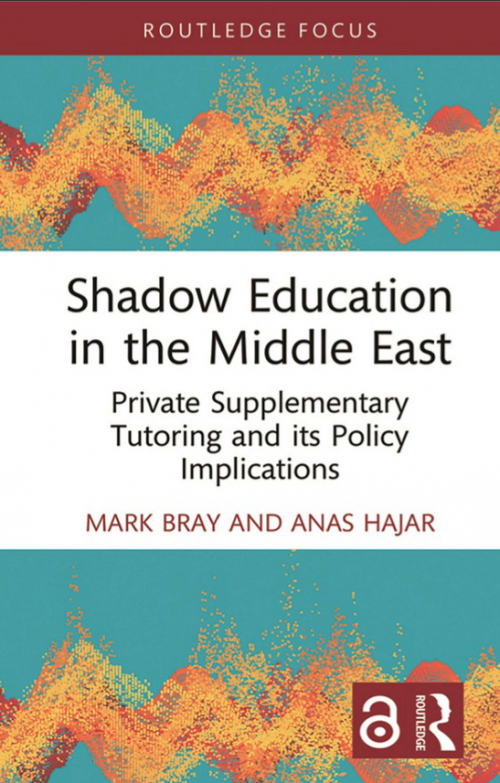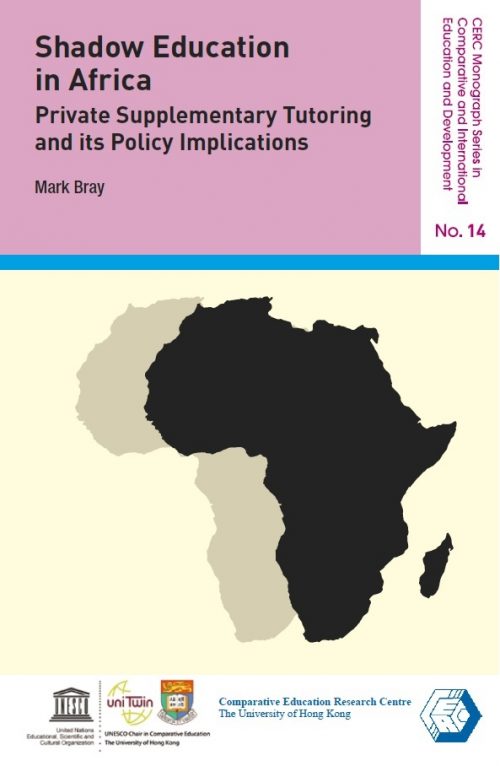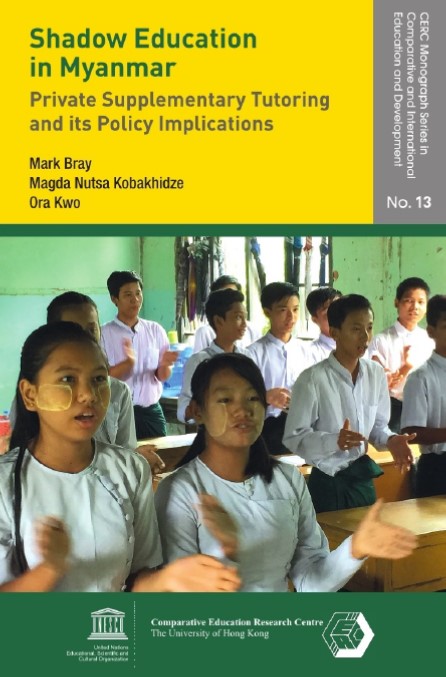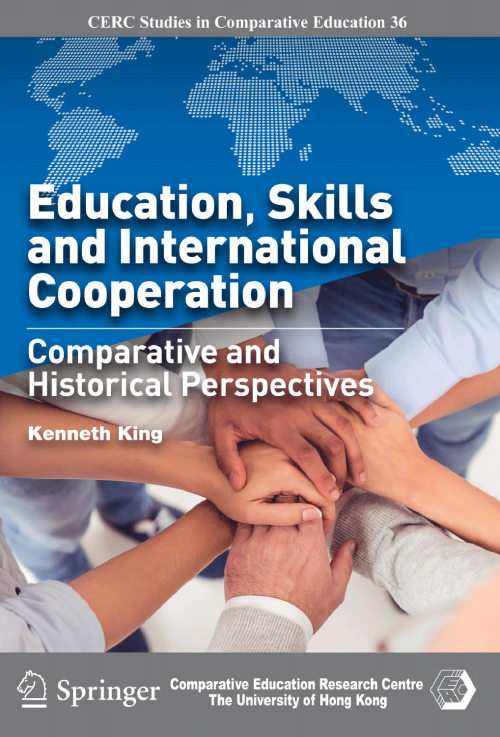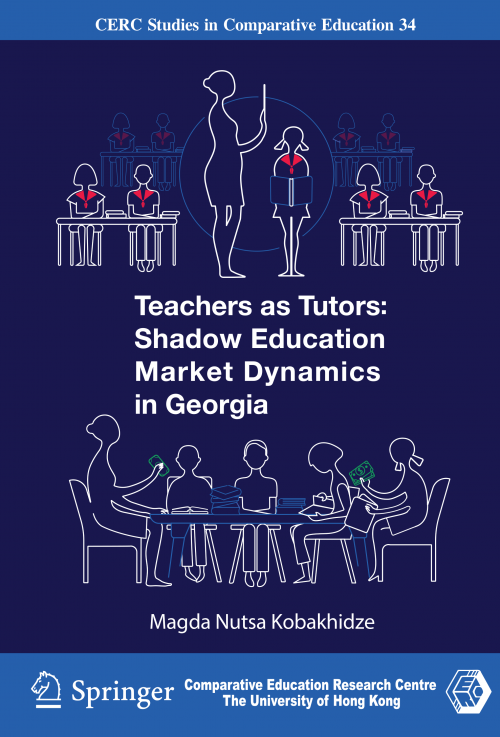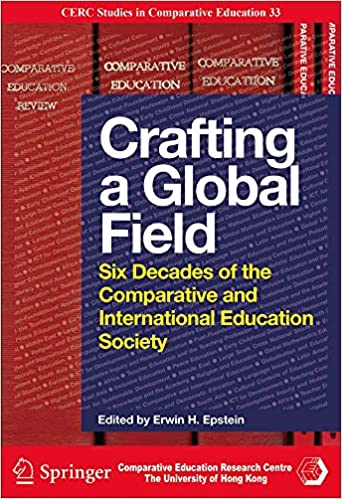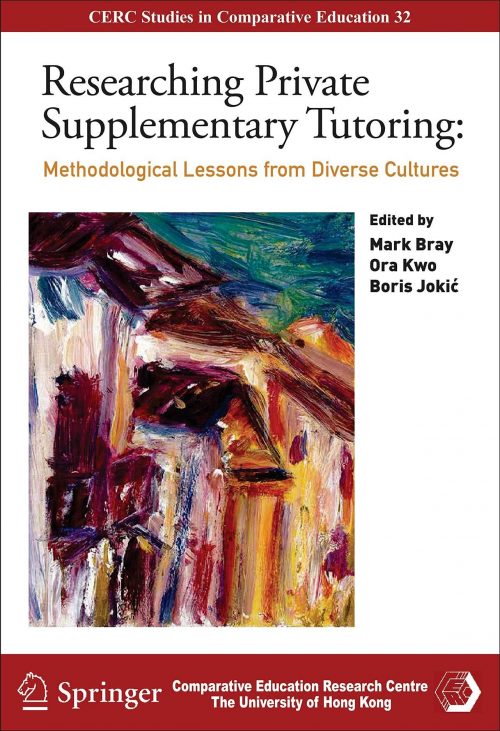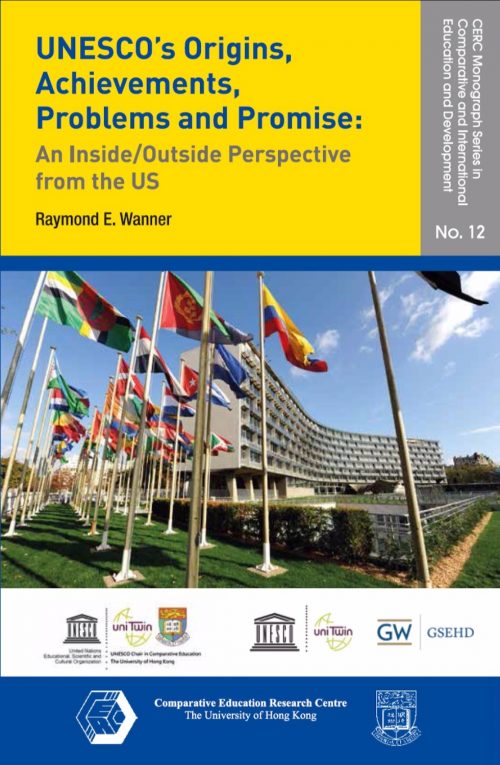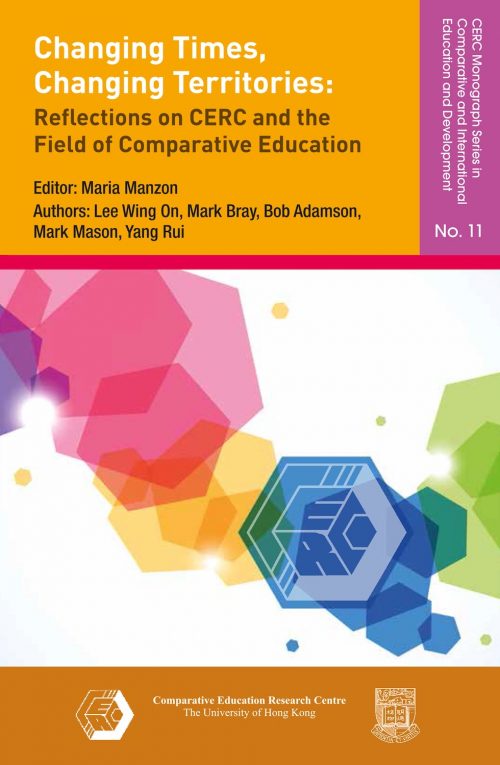Download the article:
 Academic-Praxis.1.18-36.Zha-and-Wu.pdf
Academic-Praxis.1.18-36.Zha-and-Wu.pdf
The notion of global competence of students increasingly raises concerns among both educational researchers and practitioners. In 2018, the PISA tests assessed global competence of 15-year-old students for the first time (OECD, 2018). According to OECD, such a multidimensional capacity has been identified as the individual ability of examining “local, global and intercultural issues”, understanding and appreciating “different perspectives and world views”, interacting “successfully and respectfully with others, and taking “responsible action toward sustainability and collective well-being” (OECD, 2018, p.4). It was systematically tested through a cognitive assessment, which “is designed to elicit students’ capacities to critically examine global issues, recognize outside influences on perspectives and world views, understand how to communicate with others in intercultural contexts, and identify and compare different courses of action to address global and intercultural issues”, as well as a background questionnaire which asks students “to report how familiar they are with global issues, how developed their linguistic and communication skills are, to what extent they hold certain attitudes, […] and what opportunities they have at school to develop global competence” (OECD, 2018, p.6).
Also at the basic education level, the Asia Society states that “global competence is multi-faceted and includes cognitive development, socioemotional skills, and civic learning”, which “has four overlapping dimensions” including “the capacity to critically examine [worldwide] issues such as poverty, trade, migration, inequality, environmental justice, conflict, cultural differences, and stereotypes”, “the capacity to understand and appreciate different perspectives and world views”, “the ability to interact positively with people of different national, social, ethnic, and religious backgrounds, as well as those of different genders”, and “being willing to act constructively to address issues of sustainability and well-being” (Asia Society & OECD, 2018, p.12). Its Center for Global Education “has worked with urban education systems across North America and Asia”, and “in those schools, global competence is composed of the knowledge, skills, and dispositions that a productive, involved citizenry uses to meet the problems and opportunities of the world” (Asia Society & OECD, 2018, p.9). As one of the participants of its program, Mulgrave School in Vancouver (British Columbia, Canada), for instance, has attempted to let students “have the skills, values, attitudes, and qualities to survive, thrive, and be happy no matter where they are in the world” (Asia Society & OECD, 2018, p.30). Many of these basic education graduates are going up to higher education. How their global competence shaped by schools would fit in higher education curriculum and be developed at universities deserves attention.
Global Competence in Higher Education: the theoretical conceptualization
In terms of students at the higher education level, however, the connotation and development of global competence have not been investigated theoretically and systematically. Although cross-cultural and globally oriented education has long been concerned by various researchers, “the higher education community has not yet reached an agreement on the operational definition of global competence” (Blumenthal & Grothus, 2008; Deardorff, 2011; Hunter et al., 2006; cited in Li, 2013, p.126). “Multiple terminologies have been employed in various occasions such as ‘intercultural competence’, […] ‘global citizenship’ and ‘intercultural sensitivity’” (Li, 2013, p.126) when discussing issues surrounding cultivating university students’ global competence. In terms of the widely-used term “intercultural competence” in higher education, for instance, its various definitions were proposed based on five categories of models in education/training/research: compositional models (e.g., Deardorff, 2006; Hunter et al., 2006; Ting-Toomey & Kurogi, 1998) that describe the characteristics of knowledge, skills and attitudes; co-orientational models (e.g., Fantini, 1995; Kupka, 2008; Rathje, 2007) that “tend to describe the […] process of a successful intercultural interaction; developmental models (e.g., Bennett, 1986; King & Magolda, 2005) that describe the notion “in terms of individual development over time”; adaptational models (e.g., Berry et al., 1989; Gallois et al., 1988) that “combine the developmental components of the aforementioned models and present them in an interactional context of adapting to a foreign culture”; and path models (e.g., Arasaratnam, 2008; Deardorff, 2006; Griffith & Harvey, 2000; Hammer et al., 1998) that “attempt to integrate the characteristics of compositional models and situate them in an interaction in which variables influence each other to predict [such a capacity]” (Griffith et al., 2016, p.2).
For the exact term of “global competence” in higher education, Caligiuri and Santo (2001), through interviewing a group of global human resource managers and business leaders, propose eight developmental aptitudes of global competence, such as the ability to change leadership style based on the situation, knowledge of professional contacts worldwide, knowledge of international (business) issues, openness, flexibility, and reducing ethnocentrism. Ortiz-Marcos et al. (2020) explore European engineering companies’ understanding toward global competence for engineers, which “seems potentially well positioned to inform higher education institutions’ global competence education” (p.1). The research participants from the industrial field suggested some important competencies “such as long-term vision, transcultural empathy, promotion of change, open mindedness, creativity, negotiation and communication, ethical orientation, teamwork, networking and curiosity” (Ortiz-Marcos, et al., 2020, p.11). In the meantime, the HR specialists suggested that “young professionals lack interpersonal and soft skills and are more oriented toward technical competencies” (Ortiz- Marcos et al., 2020, p.11). These studies show that the business sector and companies highlight that global competencies at least have the same relevance as technical skills, yet higher education still invests poorly in developing these sorts of competencies (Caligiuri and Santo, 2001; Ortiz- Marcos et al., 2020).
In an intrinsic sense, Hunter et al. (2006) defines global competence as “having an open mind while actively seeking to understand cultural norms and expectations of others, leveraging this gained knowledge to interact, communicate and work effectively outside one’s environment” (p.270). The OECD (2018) further frames this concept as “the acquisition of in-depth knowledge and understanding of global and intercultural issues; the ability to learn from and live with people from diverse backgrounds; and the attitudes and values necessary to interact respectfully with others” (p.1). Meng et al. (2017) shed light on three dimensions, namely knowledge, skills/experience, and attitudes, when identifying the notion of global competence in higher education. “Knowledge [dimension] refers to the understanding of history, geography, economic, political and other issues related to one’s own and a foreign culture” (Hunter et al., 2006; Reimers, 2009; cited in Meng, et al., 2017, p.161). The skill dimension “cover[s] a range of personal capabilities to collect and process information in a cross-cultural environment, such as second language capacity, adapting to difficult situations, handling stress and communication skills (Papadopoulos et al., 1998; Deardorff, 2006; Hunter et al., 2006; cited in Meng, et al., 2017, p.161). The attitude dimension describes “the awareness of the global diversity and cultural complexity and the respect for cultural differences (Reimers, 2009; Mansilla and Jackson, 2011; cited in Meng, et al., 2017, p.161), and “an inner curiosity in investigating the world beyond his/her immediate environment” (Deardorff, 2009; cited in Meng, et al., 2017, p.161). Based on previous studies, Liu et al. (2020) develop an instrument for measuring graduate students’ global competence, which focuses on measuring students’ “knowledge and understanding” (i.e., “world knowledge, understanding globalization, and international academic knowledge”), “skills” (i.e., “the use of tools, cross-cultural communication, and international academic communication), and “attitude and values” (i.e., intent to interact, an open attitude, and values) (Liu, et al., 2020, p.5).
It appears that the development of the notion of global competence in higher education has pushed a stride from a knowledge/skills-focused domain to an explicit value-laden artifact, or, simply put, a shift from aptitude to attitude. This shift, however, is not yet backed up and sustained by an appropriate epistemological framework and a pedagogical system. Put explicitly, this artifact manifests a simple addition of the inter-/cross-cultural competence and the awareness/respect in regard to global diversity, rather than embedding the knowledge and skills entirely and organically in the conceptualization of global interconnectedness. To a certain degree, this deficiency reflects the conceptual discrepancy and knowledge gap between international education and global education. International education curriculum encompasses studies of specific areas or regions of the world, and, to some extent, implies national interests rather than emphasizing global benefits. By contrast, global education curriculum focuses on the interconnected nature of knowledge and epistemology, pointing to a pedagogy dependent on disciplined inquiry that encompasses a deeper understanding, broader knowledge base, and emphasis on the interconnectedness of that knowledge. Put succinctly, the epistemological gap between international education and global education denotes difference between inter-territorial interactions of internationality and transterritorial connections of globality. By the same token, the conceptualization of global competence in higher education needs to step over a gap between the aptitudes for inter-/cross-cultural communications and the attitudes toward a global citizenship, which in turn requires an epistemological framework that is both innovative and transformative.
Global Competence in Higher Education: the pedagogical development
Taking the diverging definitions and terminologies into consideration, it seems that the term of “global competence in higher education” can be tentatively identified as the capacity that enables students at higher education level to examine local, global and intercultural issues, to understand and appreciate the perspectives and world views of others, to engage in open, appropriate and effective interactions with people from different cultures, and to act for collective well-being and sustainable development in an interconnected world. Obviously, such a notion has become essential for our universities in an Anthropocene epoch, and for our university students currently and in a post pandemic era. “Developing global competence is particularly important in today’s changing world because it forecasts sustainable development” (Ortiz- Marcos et al., 2020, p.4).
There are various practices of enhancing university students’ global competence in both the developed world and emerging economies, initiated by higher education institutions (e.g., Tsinghua University in mainland China) and non-profit organizations (e.g., the American Field Service). In terms of the pedagogy, it seems that existing patterns and practices of global competence enhancement are mainly based on knowledge transmission, e.g., offering and taking the courses, reading the literature and materials (which are mostly derived from inter- /cross-cultural studies). However, some of the aptitudes previously mentioned such as the individual capabilities to process information in a cross-cultural environment, and in particular the interpersonal skills based on constant awareness and profound experience with respect to the fundamental interconnectedness of human activities and common future, seem to be not easy and effective to improve through traditional form of classroom learning. As such, it is necessary and important to deploy creative and transformative pedagogical practices (such as experiential learning) for the sake of heightening university students’ global competence, which is essential in an increasingly globalized world. In this regard, the Global Competence Certificate (GCC) program provided by the American Field Service (AFS) might bear promising potentials. It is identified as “a blended learning program” (i.e., comprising the “GCC at Home” and “GCC Study Abroad”) which “empowers students and faculty with tangible global competence skills that are fundamental to building just and peaceful societies—and essential to live, learn, work and volunteer in diverse settings at home and around the world” (AFS, n.d.- a). Specifically, the GCC at Home fosters that “learners collaborate across difference through the online program that requires no travel”, and it “brings into learners’ awareness that culture is all around us within our own communities” (AFS, n.d.-a). The GCC Study Abroad “develops learners’ global competence before, during and after their international experience” (AFS, n.d.-a). Presently, “a special edition” of the AFS GCC has been provided for “students whose study abroad has been disrupted by COVID-19,” which “includes content on coping during crisis, navigating ambiguity, developing resilience, being flexible, and connecting across differences,” for the purpose of helping students to “become active global citizens” (AFS, n.d.-b). It appears that, while the GCC is intrinsically linked to a noble end (building just and peaceful societies), both the GCC at Home and GCC Study Abroad have built-in experiential learning components and draw on such learning approaches. The AFS has been working to empower people to become globally engaged citizens via organizing and delivering meaningful inter-/cross-cultural experiences. Over the years, it has developed and accumulated abundant experiential learning resources and networks in this field, thus its GCC program is potentially a changemaker with respect to pedagogical development of global competence in higher education.
Now we are going to use cases in China to illustrate the conceptual divergence and shift of global competence in higher education, as well as the needs for pedagogical development. China is chosen not only because it is now a forerunner in internationalization of higher education (Zha et al., 2020) but also because the Chinese government initiates the notion of a global community with shared future for mankind. Chinese universities embrace this notion within their functions, including organizing and delivering global competence education. For example, Shandong University (Weihai Campus) has a multidisciplinary research and teaching institution, the Global Engagement (Competence‡) Academy (GEA), which identifies its mission as “producing original theoretical research outcomes for contributing to the human knowledge system, providing policy suggestions, and contributing to the construction of a community of shared future for mankind” (GEA of Shandong University, 2020, para.2). In addition to conducting research, it regularly offers an “international English commentary writing program” providing training to media workers, practitioners of public diplomacy, public affairs officials, and university faculty members and students in the relevant fields. This training program contains courses on topics such as “China’s global competence”, “writing analytical articles on international relations”, “telling Chinese stories”, “dialogue between China international media and the Western mainstream opinions,” and “communication strategies to enhance the influence of China’s voice on the overseas social media platforms” (GEA of Shandong University, 2021, para.3). Its application guidelines state explicitly that this program sets the ultimate goal as heightening China’s global soft power (GEA of Shandong University, 2021, para.3). Apparently, this is very much an “international education” version of global competence education, emphasizing fulfilment of national interest in the globalizing context.
By contrast, Tsinghua University sets its Center for Global Competence Development (CGCD) for “providing guidance, support and resources for all Tsinghua students on global competence development, and to promoting the integration of global competence development into the university-wide student cultivation process” (Tsinghua International Education, n.d.-a). Global competence has been defined as “the capability to learn, work and live with others from different culture origins, to embrace opportunities and challenges in the future” (Tsinghua International Education, n.d.-b, p.2). The university has identified six core competencies “which requires Tsinghua students to continuously explore,” including the competencies of understanding “world knowledge and global issues,” “[being] able to express in one’s native language and at least one foreign language in both oral and written form,” “[embracing] new adventures with curiosity and an open mind,” “[having] team spirit” and “[being] able to interact and communicate with people from different cultural backgrounds,” “[recognizing] deeply one’s own cultural heritage and values,” and “uphold[ing] integrity and comply with social and professional ethics” (Tsinghua International Education, n.d.-b, p.2). For the purpose of enhancing such capacities, somewhat similar to the AFS- GCC program, Tsinghua University has adopted two approaches of “study at home” and “study abroad” (Tsinghua International Education, n.d.-b, p.3). The “study at home” approach contains offering English courses at both the undergraduate and graduate levels, conducting collaborative research with foreign universities, holding international academic conferences, encouraging students to do internships in branches of international organizations in mainland China, and organizing cultural events (e.g., the Tsinghua International Music Festival) (Tsinghua International Education, n.d.-b, p.3). Its “study abroad” approach includes offering overseas exchange programs for undergraduate students and Sino-foreign joint master’s programs, supporting doctoral students to participate in international conferences, and providing overseas internship and research opportunities (Tsinghua International Education, n.d.-b, p.3). It seems that Tsinghua’s CGCD, while leaning toward a “global education” version of global competence education and provoking interactions and understanding of the global diversity, it still places the emphasis on career opportunities and thus human capital development.
The Concluding Remarks
The two cases in China, namely, Shandong University’s Global Engagement (Competence) Academy and Tsinghua University’s Center for Global Competence Development, shed light on a spectrum of global competence in higher education, promoting national interest in global economy and geopolitics at one end and fostering individuals’ capabilities in coping with a globalizing reality at the other. To a large extent, this spectrum showcases Thomas Friedman’s different versions of globalization, i.e., globalization through a nation-state lens vs globalization demanding the individual fit (Friedman, 2005, pp.5-12). This spectrum identified with cases in China has essentially covered the national and the individual well-being in the context of globalization, but not necessarily the global well-being—at least not explicitly. The AFS Global Competence Certificate links this notion to global well-being goals, e.g., developing tangible global competence skills that are fundamental to building just and peaceful societies, though, there is no tangible epistemological framework for organizing and delivering the curriculum that fosters such competence skills.
Hence, there needs to be truly innovative approach to identifying such an epistemological framework. For example, the Sustainable Development Goals (SDGs) might be a potential blueprint for a “global education” version of global competence in higher education. Approximately, the 17 SDGs§ may be form three thematic domains: (1) respecting life and civilization for a decent life, (2) achieving a sustainable social and economic development, and (3) maintaining the harmoniousness between human and nature. Amazingly, the three dimensions concerning global competence in higher education, namely, knowledge, skills/experience, and attitudes dimensions (Meng et al., 2017), fit well with SDGs’ three thematic domains: the knowledge dimension for respecting life and civilization, the skills/experience dimension for achieving a sustainable social and economic development, and the attitudes dimension for maintaining the harmoniousness between human and nature. As such, many of the SDGs might be brought into the global competence curriculum as the essential topics. Above all, the SDGs may forge the notion of global competence to move beyond the obsession with perpetual economic growth in the guise of human advancement and instead to embrace the principles of interdependence and interconnectedness that perceive everyone and everything as a part of the global ecological community in the Anthropocene (UNESCO, 2020). While the SDGs could be drawn on as a potential framework for organizing the global competence curriculum in higher education, there needs to be a proper and desirable pedagogy for delivering such a curriculum. In this regard, the AFS’ resources and practices of applying experiential learning in global competence education might serve as a starting point for exploring and developing pedagogical innovations, which may relate (but not limited) to the situated learning, embodied learning, multiliteracies blended learning, and multidisciplinary (e.g., scientific, social, moral and ethical, and aesthetic) reasoning (Paniagua and Istance, 2018; UNESCO, 2020).
‡ The Chinese name of this institute uses the word “competence [sheng ren li]” but its official English name uses the word “engagement”.
§ The Sustainable Development Goals include a collection of 17 interlinked goals: (1) End poverty in all its forms everywhere, (2) End hunger, achieve food security and improved nutrition and promote sustainable agriculture, (3) Ensure healthy lives and promote well-being for all at all ages, (4) Ensure inclusive and equitable quality education and promote lifelong learning opportunities for all, (5) Achieve gender equality and empower all women and girls, (6) Ensure availability and sustainable management of water and sanitation for all, (7) Ensure access to affordable, reliable, sustainable and modern energy for all, (8) Promote sustained, inclusive and sustainable economic growth, full and productive employment and decent work for all, (9) Build resilient infrastructure, promote inclusive and sustainable industrialization and foster innovation, (10) Reduce inequality within and among countries, (11) Make cities and human settlements inclusive, safe, resilient and sustainable, (12) Ensure sustainable consumption and production patterns, (13) Take urgent action to combat climate change and its impacts, (14) Conserve and sustainably use the oceans, seas and marine resources for sustainable development, (15) Protect, restore and promote sustainable use of terrestrial ecosystems, sustainably manage forests, combat desertification, and halt and reverse land degradation and halt biodiversity loss, (16) Promote peaceful and inclusive societies for sustainable development, provide access to justice for all and build effective, accountable and inclusive institutions at all levels, and (17) Strengthen the means of implementation and revitalize the Global Partnership for Sustainable Development (United Nations, 2015, 2017).
References
American Field Service (AFS). (n.d.-a). About the Global Competence Certificate. Retrieved from https://afs.org/Certificate/#afs-nav-about
American Field Service (AFS). (n.d.-b). Special COVID-19 Edition. Retrieved from https://afs.org/Certificate/#afs-nav-special-covid-19-edition
Arasaratnam, L. (2008). Acculturation processes of Sri Lankan Tamil immigrants in Sydney: an ethnographic analysis using the Bidrectional Model (BDM). Australian Journal of Communication, 35(1), 57-68. Bennett, M. J. (1986). A developmental approach to training for intercultural sensitivity. International Journal of Intercultural Relations, 10(2), 179-196.
Berry, J. W., Kim, U., Power, S., Young, M., & Bujaki, M. (1989). Acculturation attitudes in plural societies. Applied Psychology, 38,185– 206.
Bresciani, M. L. (2008). Global competencies in student affairs/services professionals: literature synthesis. College Student Journal, 42(3), 906- 919.
Caligiuri, P., & Santo, V. D. (2001). Global competence: what is it, and can it be developed through global assignments? Human Resource Planning, 24(3), 27-35.
Deardorff, D. K. (2006). Identification and assessment of intercultural competence as a student outcome of internationalization. Journal of Studies in International Education, 10, 241-266.
Deardorff, D. K. (2009). The SAGE Handbook of Intercultural Competence. Thousand Oaks, CA: Sage.
Deardorff, D. K. (2011). Assessing intercultural competence. New Directions for Institutional Research, 149, 65-79.
Fantini, A. E. (1995). Language, culture, and world view: Exploring the nexus. International Journal of Intercultural Relations, 19, 143-153.
Friedman, Thomas L. (2005). The World Is Flat. London, England: Penguin Books.
Gallois, C., Franklyn-Stokes, A., Giles, H., & Coupland, N. (1988). Communication accommodation in intercultural encounters. In Y. Y. Kim & W. B. Gudykunst (Eds.), Theories in intercultural communication (pp.157-158). Newbury Park, CA: Sage.
GEA of Shandong University. (2020). Introduction of Shandong University (Weihai Campus) Global Engagement Academy. https://whqqsrl.wh.sdu.edu.cn/yjygk1/yjyjj.htm
GEA of Shandong University. (2021). Recruitment notice for the third summer international English commentary writing training program of Shandong University (Weihai Campus) Global Engagement Academy. https://whqqsrl.wh.sdu.edu.cn/yjygk1/yjyjj.htm
Green, M. F. & Shoenberg, R. E. (2006) Where Faculty Live: Internationalizing the Disciplines. Washington, DC: American Council of Education.
Griffith, D. A., & Harvey, M. G. (2000). An intercultural communication model for use in global interorganizational networks. Journal of International Marketing, 9(3), 87-103.
Griffith, R. L., Wolfeld, L., Armon, B. K., Rios, J., & Liu, O. L. (2016). Assessing intercultural competence in higher education: Existing research and future directions. ETS Research Report Series, 2016(2), 1-44.
Hunter, B., White, G.P., & Godbey, G. (2006). What does it mean to be globally competent? Journal of Studies in International Education, 10(3), 267-285.
King, P. M., & Baxter Magolda, M. B. (2005). A developmental model of intercultural maturity. Journal of College Student Development, 46(6), 571-592.
Kupka, B. (2008). Creation of an instrument to assess intercultural communication competence for strategic international human resource management (Unpublished doctoral dissertation). University of Otago, Otago, New Zealand.
Li, Y. (2013). Cultivating student global competence: A pilot experimental study. Decision Sciences Journal of Innovative Education, 11(1), 125-143.
Liu, Y., Yin, Y., & Wu, R. (2020). Measuring graduate students’ global competence: Instrument development and an empirical study with a Chinese sample. Studies in Educational Evaluation, 67, 1-13
Mansilla, V. B. & Jackson, A. (2011) Educating for Global Competence: Preparing Our Youth to Engage the World. New York, NY: Asia Society.
Meng, Q., Zhu, C., & Cao, C. (2017). An exploratory study of Chinese university undergraduates’ global competence: effects of internationalisation at home and motivation. Higher Education Quarterly, 71(2), 159-181.
Paniagua, A. and Istance, D. (2018), Teachers as Designers of Learning Environments: The Importance of Innovative Pedagogies, Educational Research and Innovation. Paris: OECD Publishing.
Papadopoulos, I., Tilki, M. and Taylor, G. (1998) Transcultural Care: a Guide for Health Care Professionals. Salisbury, Wilts.: Quay Books.
OECD (2018). Preparing our youth for an inclusive and sustainable world: The OECD PISA global competence framework. OECD Publishing.
Ortiz-Marcos, I., Breuker, V., Rodríguez-Rivero, R., Kjellgren, B., Dorel, F., Toffolon, M., & Eccli, V. (2020). A Framework of Global Competence for Engineers: The Need for a Sustainable World. Sustainability, 12(22), 1-25.
Rathje, S. (2007). Intercultural competence: Thestatus and future of a controversial concept. Language and Intercultural Communication, 7(4), 254-266.
Ting-Toomey, S., & Kurogi, A. (1998). Facework competence in intercultural conflict: An updated face-negotiation theory. International Journal of Intercultural Relations, 22, 187-225.
Tsinghua International Education. (n.d.-a). About us. Retrieved from http://goglobal.tsinghua.edu.cn/en/about
Tsinghua International Education. (n.d.-b). Global competence preparing for the world. Tsinghua University.
United Nations (2015). Transforming our world: the 2030 Agenda for Sustainable Development (A/RES/70/1). UN: Resolution adopted by the General Assembly on 25 September 2015.
United Nations (2017). Work of the Statistical Commission pertaining to the 2030 Agenda for Sustainable Development (A/RES/71/313). UN: Resolution adopted by the General Assembly on 6 July 2017.
United Nations Educational, Scientific and Cultural Organization (UNESCO, 2020). Learning to become with the world: Education for future survival.https://unesdoc.unesco.org/ark:/48223/pf0000374923/PDF/37 4923eng.pdf.multi
Zha, Q., Wu, H. and Hayhoe, R. (2019). Why Chinese Universities Embrace Internationalization: An Exploration with Two Case Studies. Higher Education, 78(4), 669-686.
To Cite This Article:
Zha, Q. and Wu., H. (2021). Conceptualization and development of global competence in higher education: The Case of China. Academic Praxis, 1: 18-36.
Other Recent Articles
 Chinese Students Collaborating Across Cultures Does International Higher Education Benefit from Collaborations? International education is argued to create better opportunities for higher learning if university program designers engage both personal and collective agency in studies of foreign languages and societies (Oleksiyenko and Shchepetylnykova, 2021), and thus increase students’ chances for greater engagement with alternative learning styles and contexts (Li, 2014; Phuong-Mai, et al., 2005). Yet, achieving a highly efficient design for cross-cultural learning is a challenge when courses prioritise technical… Read more
Chinese Students Collaborating Across Cultures Does International Higher Education Benefit from Collaborations? International education is argued to create better opportunities for higher learning if university program designers engage both personal and collective agency in studies of foreign languages and societies (Oleksiyenko and Shchepetylnykova, 2021), and thus increase students’ chances for greater engagement with alternative learning styles and contexts (Li, 2014; Phuong-Mai, et al., 2005). Yet, achieving a highly efficient design for cross-cultural learning is a challenge when courses prioritise technical… Read more Ukrainian Academics in the Times of War On February 24, 2022, Russia launched a brutal full-scale war of aggression against Ukraine. Eight years after the invasion of the Crimea and Donbas, the Russian government acted on Vladimir Putin’s assertions that Ukraine is not (and should not be) a country – a view deeply ingrained in propaganda-addled Russian popular opinion, to attempt to obliterate the Ukrainian state and identity. The Russian army has been bombing Ukrainian cities, including residential areas, universities and schools.… Read more
Ukrainian Academics in the Times of War On February 24, 2022, Russia launched a brutal full-scale war of aggression against Ukraine. Eight years after the invasion of the Crimea and Donbas, the Russian government acted on Vladimir Putin’s assertions that Ukraine is not (and should not be) a country – a view deeply ingrained in propaganda-addled Russian popular opinion, to attempt to obliterate the Ukrainian state and identity. The Russian army has been bombing Ukrainian cities, including residential areas, universities and schools.… Read more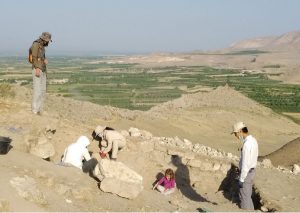 Interdisciplinary Learning in an Intercultural Setting During Archaeological Fieldwork Since archaeology studies the full spectrum of the human past, it is naturally an academic discipline that engages a very wide range of topics – spanning the humanities, social sciences, physical sciences, and technology. Often, archaeological projects also take place in international settings, with team members joining from around the world. Therefore, archaeological fieldwork offers an ideal laboratory for experimenting with interdisciplinary learning in intercultural settings. Over the last several years, our project has engaged… Read more
Interdisciplinary Learning in an Intercultural Setting During Archaeological Fieldwork Since archaeology studies the full spectrum of the human past, it is naturally an academic discipline that engages a very wide range of topics – spanning the humanities, social sciences, physical sciences, and technology. Often, archaeological projects also take place in international settings, with team members joining from around the world. Therefore, archaeological fieldwork offers an ideal laboratory for experimenting with interdisciplinary learning in intercultural settings. Over the last several years, our project has engaged… Read more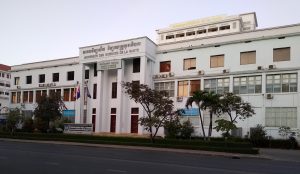 Higher education in Cambodia: Reforms for enhancing universities’ research capacities While Cambodian higher education is facing many challenges (see Heng et al., 2022a; Sol, 2021), the major issue that calls for reforms is a limited research capacity of Cambodian universities and academic staff. This problem needs immediate attention. Policy actions are required to improve the research landscape in the country and empower local academics for a more productive and impactful academic performance. In the following sections, I elaborate on my arguments Limited research output:… Read more
Higher education in Cambodia: Reforms for enhancing universities’ research capacities While Cambodian higher education is facing many challenges (see Heng et al., 2022a; Sol, 2021), the major issue that calls for reforms is a limited research capacity of Cambodian universities and academic staff. This problem needs immediate attention. Policy actions are required to improve the research landscape in the country and empower local academics for a more productive and impactful academic performance. In the following sections, I elaborate on my arguments Limited research output:… Read more Experiential Learning at the University of Hong Kong Innovation in education always starts with an idea which gradually develops into on-the-ground practices, and can then spread to different areas in an education institute. In higher education, innovation can be demonstrated in various ways. While people might relate innovation naturally with the use of new and advanced technology, curriculum can also be an area where innovative ideas are applied. In fact, as scholars have highlighted, innovation aimed at transforming the curriculum was beneficial not… Read more
Experiential Learning at the University of Hong Kong Innovation in education always starts with an idea which gradually develops into on-the-ground practices, and can then spread to different areas in an education institute. In higher education, innovation can be demonstrated in various ways. While people might relate innovation naturally with the use of new and advanced technology, curriculum can also be an area where innovative ideas are applied. In fact, as scholars have highlighted, innovation aimed at transforming the curriculum was beneficial not… Read more Innovation and Liberal Arts Education In the contemporary, globalized, neoliberal landscape of higher education, the increasingly intertwined relationship between government, industry, and universities is changing the nature and mission of higher education. The imperative of economic growth imposes new demands on the type of graduates that are needed to enter the workforce, and consequently on the priorities that universities should set. The call to innovate cannot be ignored if a university wishes to survive. Within the context of higher education,… Read more
Innovation and Liberal Arts Education In the contemporary, globalized, neoliberal landscape of higher education, the increasingly intertwined relationship between government, industry, and universities is changing the nature and mission of higher education. The imperative of economic growth imposes new demands on the type of graduates that are needed to enter the workforce, and consequently on the priorities that universities should set. The call to innovate cannot be ignored if a university wishes to survive. Within the context of higher education,… Read more Quiet Leadership in Schools: A Personal Reflection This article argues for the importance of quiet, introverted leaders in international schools as a counterbalance to the extroverts who seem to make up the bulk of leadership posts in these institutions. It builds on essays by Liz Jackson (2021) and Bruce Macfarlane (2021), which explore leadership in university settings. These authors examine the de facto expectations of leaders to be outgoing and forceful, but challenge the idea of the heroic leader, suggesting that more… Read more
Quiet Leadership in Schools: A Personal Reflection This article argues for the importance of quiet, introverted leaders in international schools as a counterbalance to the extroverts who seem to make up the bulk of leadership posts in these institutions. It builds on essays by Liz Jackson (2021) and Bruce Macfarlane (2021), which explore leadership in university settings. These authors examine the de facto expectations of leaders to be outgoing and forceful, but challenge the idea of the heroic leader, suggesting that more… Read more Academic Praxis: An Editorial Note The recent special issue which I co-edited with my colleague, Liz Jackson, discussing dilemmas affecting the freedoms of speech, teaching and learning in the post-truth age (see Oleksiyenko and Jackson 2020), points to the importance of developing an academic praxis, in which each of us continually questions the purposes, processes and values of teaching, learning and inquiry. These days, I am increasingly inclined to think of higher learning as a journey of ceaseless introspection, which… Read more
Academic Praxis: An Editorial Note The recent special issue which I co-edited with my colleague, Liz Jackson, discussing dilemmas affecting the freedoms of speech, teaching and learning in the post-truth age (see Oleksiyenko and Jackson 2020), points to the importance of developing an academic praxis, in which each of us continually questions the purposes, processes and values of teaching, learning and inquiry. These days, I am increasingly inclined to think of higher learning as a journey of ceaseless introspection, which… Read more



